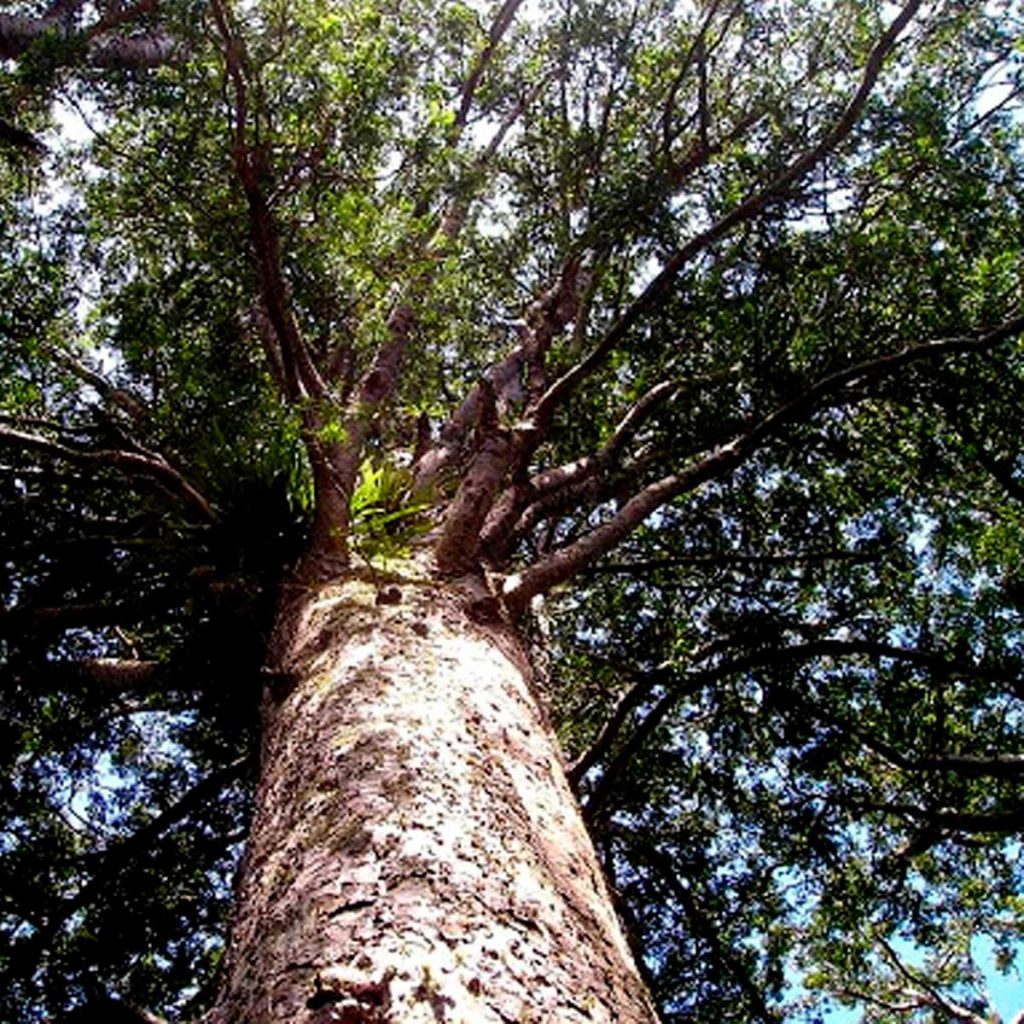
Trees / Kauri
Information for Juniors
Kauri
- Found only in the North Island
- Dense pockets in the Coromandel and Kaipara Harbour area
- Trees grow to 30m after 30 years
- The tree grows straight and slowly making Kauri timber a prize
- The golden wood is great to work and kauri furniture and floors are sought-after
Bark & Foliage
- Young bronze-coloured leaves turn green as the Tree matures
- Leaves are tough and waxy to the touch
- The bark is silvery brown and grey in colour
- Flakes or scales are shed leaving a scar
- Gum leaks from the scar
Cones – Seed pods
- The cone-shaped seed pods once pollinated are filled with seeds
- After 2 years the mature cones release the seed often, with explosive force which scatters the seeds many metres from the tree
- In good conditions the seed will germinate in 2-3 months


Information for Junior Secondary
Kauri
- Found only in the North Island north of Taupo
- Dense pockets in the Coromandel and Kaipara Harbour area
- Trees grow to an average size between 30-50m after 25 years
- The diameter can range upwards of 2-5m
- The tree grows straight and slowly making Kauri timber a prize
- The golden wood is great to work and kauri furniture and floors are sought-after
Bark & Foliage
- Young bronze-coloured leaves turn green as the Tree matures
- Leaves are tough and waxy to the touch
- The bark is silvery brown and grey in colour
- Flakes or scales are shed leaving a scar
- Gum and resin leak from the scar
Cones – Seed pods
- Cones release their pollen in spring
- The cone-shaped pods once pollinated are filled with seeds
- After 2 years the mature cones release the seed often, with explosive force which scatters the seeds many metres from the tree
- In good conditions the seed will germinate in 2-3 months


Information for Seniors
Kauri
- Found only in the North Island north of Taupo
- Dense pockets in the Coromandel and Kaipara Harbour area
- Trees grow to an average size between 30-50m after 25 years
- The diameter can range upwards of 2-5m
- The tree grows straight and slowly making Kauri timber a prize
- The golden wood is great to work and kauri furniture and floors are sought-after
Bark & Foliage
- Young bronze-coloured leaves turn green as the Tree matures
- Leaves are tough and waxy to the touch
- The bark is silvery brown and grey in colour
- Flakes or scales are shed leaving a scar
- Gum and resin leak from the scar
Cones – Seed pods
- Cones release their pollen in spring
- The cone-shaped seed pods once pollinated are covered with scales that protect the pod and are craftily designed to open easily
- After 2 years the mature cones release the seed often, with explosive force which scatters the seeds many metres from the tree
- In good conditions the seed will germinate in 2-3 months
Interesting Facts
- Tane Mahuta is NZ’s most famous large (45m) Kauri located in the Waipoua Forest north of Dargaville. The tree is over 2,000 years old according to its ring count
- The Kauri requires NO pruning, it is self-pruning releasing its unnecessary branches and then healing the damage
- The kauri forests of NZ were decimated during the 18th Century as the trunks and timber were the tree of choice for owners of sailing ships. Their straight strong trunks made excellent masts
- A major industry developed using the resin and gum of the weeping Kauri. Resin was used as the base material for varnish and paint
- Furniture constructed from Kauri remains a real treasure – the golden coloured wood is easy to craft into stunning pieces


Activities
- Why is the Kauri the most sought-after timber in NZ?
- What is the average increase in the height of the tree each year?
- Write a brief report showing the technology for cutting down Kauri trees of the 18th century through to today
- Find 4 photos that show the change of the machinery used in the forest to transport trees that have been felled since 1900
- Describe the leaf of a Kauri and compare with the Puriri leaf
